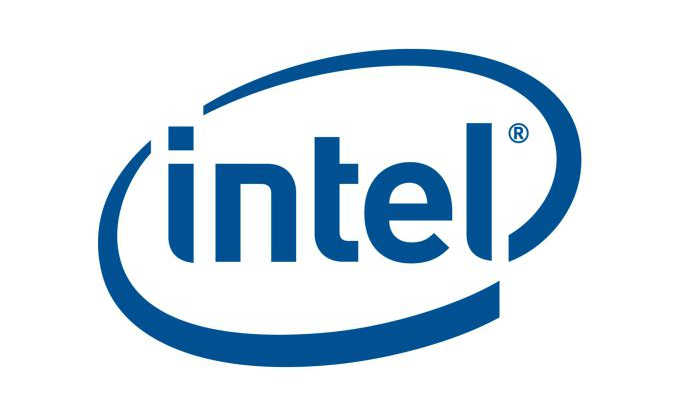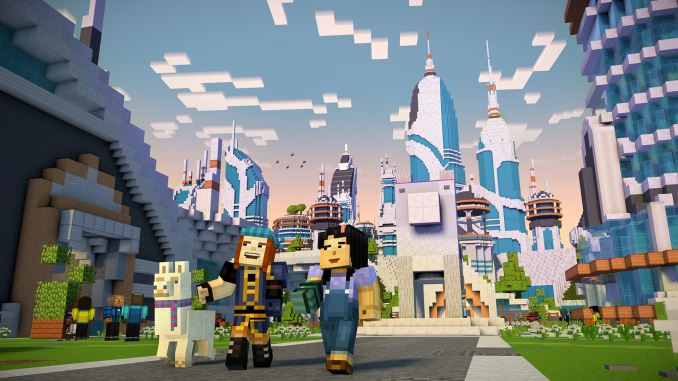Intel Releases Graphics Driver 15.46 for Windows
by Nate Oh on July 18, 2017 9:00 PM EST
With last week’s release of Minecraft: Story Mode – Season Two, Intel has released their Graphics Driver 15.46 to provide launch support, as well as bugfixes, feature updates, Computer Vision and AI application development support, and support for Windows 10 Creator’s Update features. The driver is only for Windows 10 64-bit, and applies to Intel HD, Iris, and Iris Pro graphics on 6th and 7th generation processors (Skylake and Kaby Lake), Apollo Lake platforms, and Xeon E3-1200v5/E3-1500v5/E3-1200v6 product families.
Other than Minecraft: Story Mode, several other games have launch drivers or improvements included in 15.46 (Driver Version 15.46.02.4729, Windows Driver Store Version 22.20.16.4729): Fortnite, Gigantic, Pyre, Master x Master, Secret World Legends, and Pit People. Intel notes that all these optimizations only apply for processors with HD Graphics 620 or better.
In terms of key game bugs, Intel has corrected texture flickering in Halo 2 and other DX9 games. Intel has also resolved issues with graphical anomalies in Guilty Gear Xrd, Fallout 4, Euro Truck Simulator 2, Guild Wars 2, Deus Ex: Mankind Divided, Vikings – Wolves of Midgard, Rainbow Six Siege, For Honor, Watch Dogs 2, Lego Minifigures Online (DX12 mode), and other games. Finally, Intel has fixed intermittent crashes and hangs in Guild Wars 2, DOTA 2, and The Talos Principle (when resumed from suspend state in Vulkan mode), and others.
Other non-game related issues were resolved in 15.46 as well. The HD Graphics Control Panel no longer displays the Panel Self Refresh (PSR) option for non-PSR panels, and now does not have issues with bezel correction in tri-display collage configurations. Additionally, Intel has resolved an issue with graphical anomalies for certain tablets when the panel is rotated 180 degrees through hardware during fullscreen video playback. Lastly, Intel has fixed incorrect resolution caps during virtual display auto-detection, and has brought general WebGL stability improvements.
The 15.46 driver also brings support for CV and AI workload acceleration on Intel integrated GPUs. This support ties in with Intel’s open source Compute Library for Deep Neural Networks (clDNN) and associated Computer Vision SDK and Deep Learning Deployment Toolkits. As for the Creators Update, Intel simply states in the release notes that Windows 10 Creators Update features are enabled in 7th generation Intel Core processors.
Moving on, Intel has enabled additional OpenCL media extensions, as well as a few preview extensions. In addition, 15.46 brings support for OpenGL v4.5, Vulkan v1.0.38, and programmable sample positions in Direct3D12.
Although this graphics driver update is not the usual AMD or NVIDIA news, it is important to note that Intel remains very important in the consumer graphics space, despite the cancellation of Larrabee for discrete consumer graphics some seven years ago. As of Q1 2017, Intel iGPUs hold over 70% share of the graphics market. Since 2010, Intel has kept marching on, enhancing their integrated graphics prowess with Iris to the extent that Intel themselves now consider their iGPUs equivalent to discrete GPUs for mainstream and casual gamers. As iGPUs and APUs become more and more powerful, lower-end discrete graphics may be supplanted entirely.
Likewise, there is a machine learning element involved as well. In recent years, Intel has made a push towards deep learning in edge devices by utilizing their ubiquitous iGPUs, efforts of which are continuing in this very 15.46 driver. With Intel acquisitions like Nervana and Movidius, it was only a matter of time before the humble Intel IGP was hit with the AI and deep learning fever too. In that machine learning space, the competition is rapidly heating up with Google’s TPU, NVIDIA’s Tesla, and AMD’s Radeon Instinct among those in the mix, not to mention Intel’s own Knights Mill Xeon Phi and ARM’s own DynamIQ endeavors. As automotive, deep learning, and neural networking (as well as all the other related fields) applications grow, edge devices like Intel’s iGPUs can offer a method of democratization with respect to software development, and one to look out for in the future.
Wrapping things up, the updated drivers for Intel products are available on their driver download page. More information on 15.46 and further issues can be found in the release notes or on the 15.46 download page.
Source: Intel (via SH SOTN)













21 Comments
View All Comments
OEMG - Tuesday, July 18, 2017 - link
I wonder how long until Intel releases a discrete graphics line. Xeon Phi does not seem to have the traction Intel was hyping about. You can also hear that it has various issues, perhaps owing to non-maturity, but also maybe adapting x86 into a massively parallel thing is just stretching it too far.Intel already has a solid grasp of OpenCL and along with AMD they'll have a real chance of putting NVIDIA's CUDA right into a corner.
jasonelmore - Tuesday, July 18, 2017 - link
considering intel pays Nvidia patent licenses in their iGPU's, i doubt it will be puting CUDA into a corner anytime soon.mrbios - Wednesday, July 19, 2017 - link
That agreement is expired. As far back as December, Kyle Bennett from HardOCP had heard that they weren't renewing their agreement with Nvidia. Four or five months later, this was confirmed, and there was even talk of "Radeon Technologies" (as in the technology itself, not Radeon Technologies Group) becoming a part of Intel processors.lefty2 - Wednesday, July 19, 2017 - link
No. The agreement is perpetual and was paid in yearly installments - it's just that the payments ended, some people mistakenly think that it expired.niva - Wednesday, July 19, 2017 - link
So what you're saying is that there's a lawsuit coming...Jhlot - Wednesday, July 19, 2017 - link
No that is not what I took lefty2 to be saying. I interpreted it as they agreed to pay a fixed sum over a set number of installments for a perpetual license and they finished paying and now get to keep using the licensed tech forever.planetguy - Tuesday, July 18, 2017 - link
Just now, Windows made OpenGL 4.5, for only Skylake/Kabylake? The open-source Linux driver had that in October, and supports it on Broadwell too. But congratulations, I guess.lmcd - Wednesday, July 19, 2017 - link
They're very much separate codebases (in case you didn't know).Gigaplex - Wednesday, July 19, 2017 - link
Sure, but historically the Linux driver lagged in OpenGL support compared to the Windows driver. Things have changed quite a bit recently.niva - Wednesday, July 19, 2017 - link
When more mobile devices exist these days than actual desktop/laptop Windows PCs combined, each one of them supporting and needing Open GL updates, and running on iOS or Android (which uses linux kernel), it becomes a much higher priority. I think this trend is here to stay, which is probably a good thing.